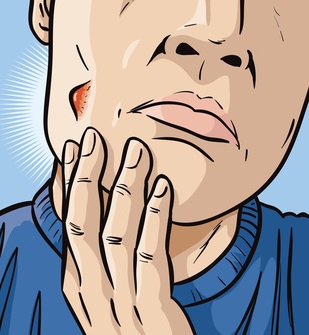
You can get a boil on any part of your body but a boil on the face is very visible and you may be concerned about how it will affect your appearance. On the other hand, you might be more concerned with how painful a boil on the face can be. Boils can hurt a lot, especially in sensitive areas like the face.
What Causes a Boil on Face?
All boils are caused by bacteria, most often by a form of staph. Staph often lives on the skin but people don’t always know they carry it. Any tiny break in the skin, like a nick from shaving, an insect bite, or an ingrown hair, can allow bacteria to enter the body. Sometimes it’s not known how the bacteria entered the body, though.
A boil, also known as a skin abscess, is a pocket of infection that develops just beneath the skin. Old white blood cells, bacteria, and other debris collect there, forming a pocket of pus. On the surface, you can see what starts out looking like a pimple. As the infection grows, though, the boil gets bigger and bigger. Pimples don’t get anywhere near as large as some boils do.
What About Boils on Nose?
Not only can staph live on the skin, but it can also live in the nostrils, too. That means you could end up with a boil on or even in your nose, which can be very uncomfortable. You can also get boils in your ears or on your eyelids, which are also pretty uncomfortable.
How do You Treat a Boil on Face?
Use warm compresses to ease the pain and to encourage the boil to drain. Over-the-counter pain relievers like ibuprofen or acetaminophen can also help with the pain.
If your boil is more than two inches across, if it’s extremely painful, if it doesn’t go away on its own after two weeks, or if you have a fever, you should see your doctor. You may need antibiotics to help fight the infection. Antibiotics alone rarely cure a boil, though, so your doctor may also decide it should be incised and drained.
To incise and drain a boil, your doctor will make a small incision with a sterile scalpel or pierce it with a sterile needle, then allow the accumulated fluid inside the boil to drain. He or she may give you a local anesthetic first so that the procedure isn’t painful. If the pocket of pus is very deep or if it can’t be completely drained, your doctor may need to pack it with sterile gauze. He or she will instruct you on how to care for the abscess and change the dressing after your appointment.
If you get recurrent boils, you should also see your doctor, even if they normally go away on their own in a short time. Your doctor can help you figure out why you keep getting them. He or she may recommend testing you for staph infection.
What Not to do
Don’t pick, squeeze, scratch, or try to pop boils. This will just make the inflammation and pain worse. It may also push the infection deeper under the skin(1). If you do pop the boil, the infection can spread. It may also lead to scarring, which you probably do not want on your face.
Our Preferred Treatment For Boils
Our preferred treatment for boils, whether on the face or elsewhere, is an all-natural botanical remedy called NZ Country Manuka Oil. This Manuka Oil is sourced from New Zealand and works to relieve symptoms such as inflammation, itching, sensitivity, and pain and to promote healing of boils. If you need to see your doctor for a boil on your face, ask him or her if it’s OK to use Manuka oil in addition to whatever treatment is prescribed. To learn more and see if NZ Country 100% Natural Manuka Oil might be a good choice for you, just follow the links.
(1)WebMD: Boils

